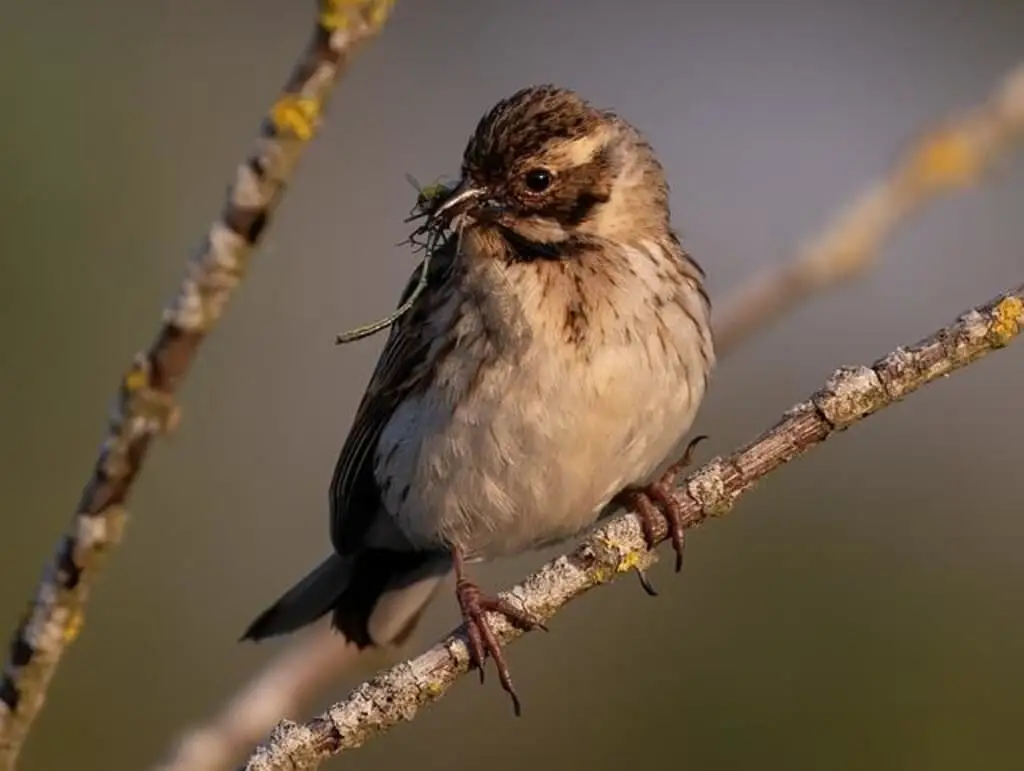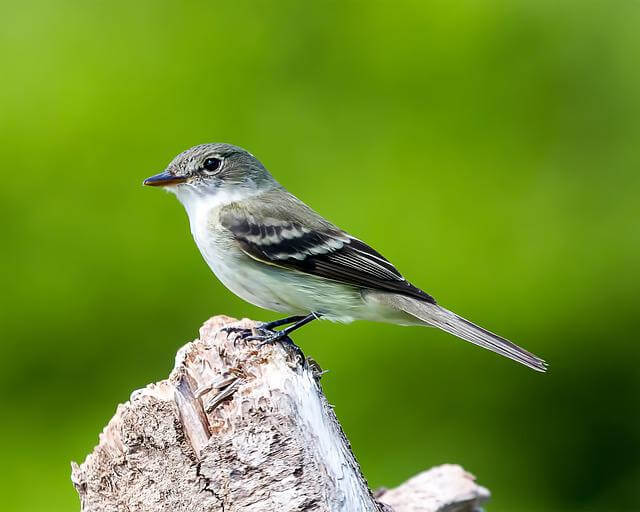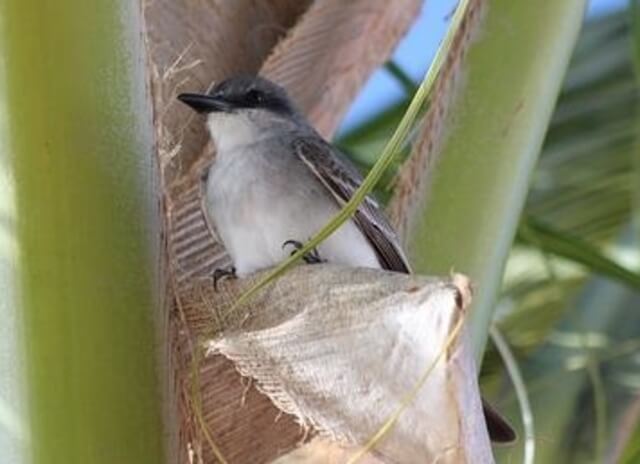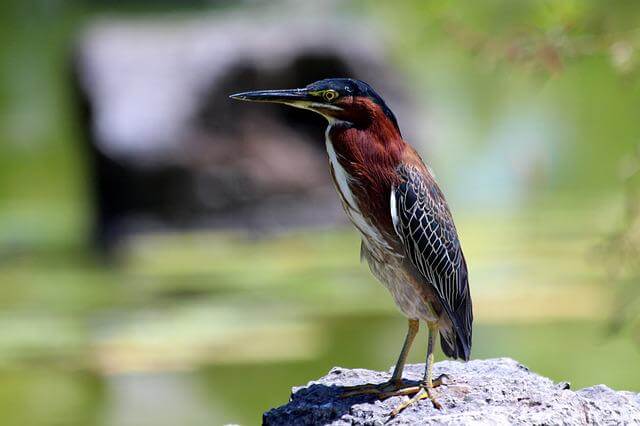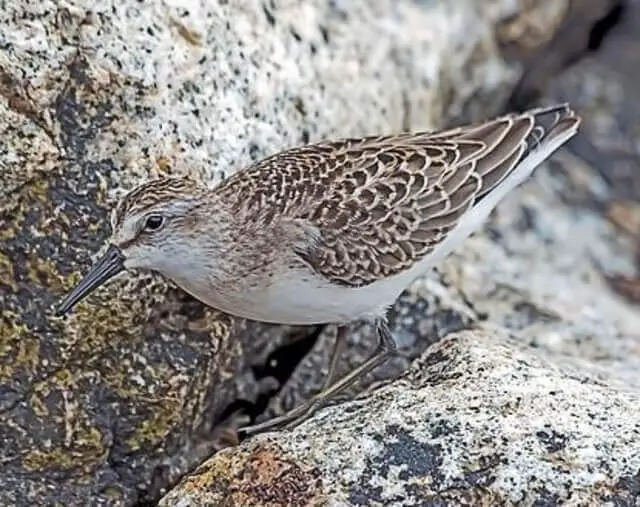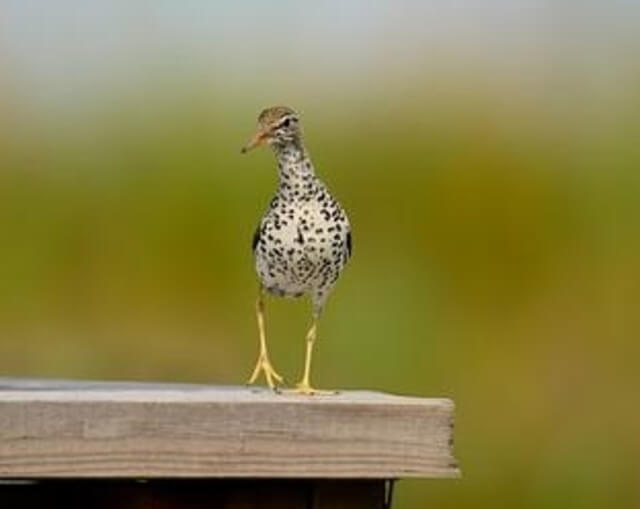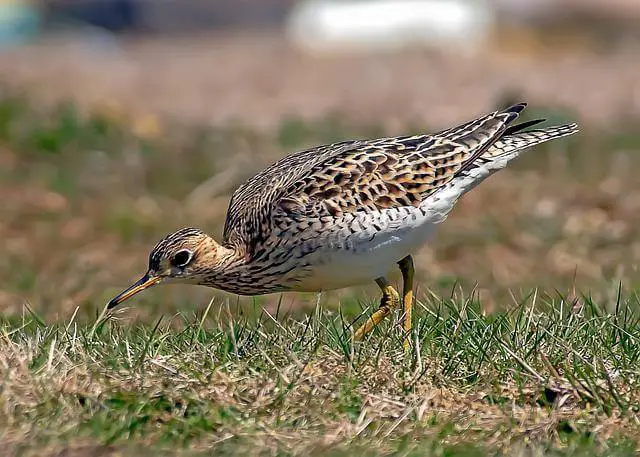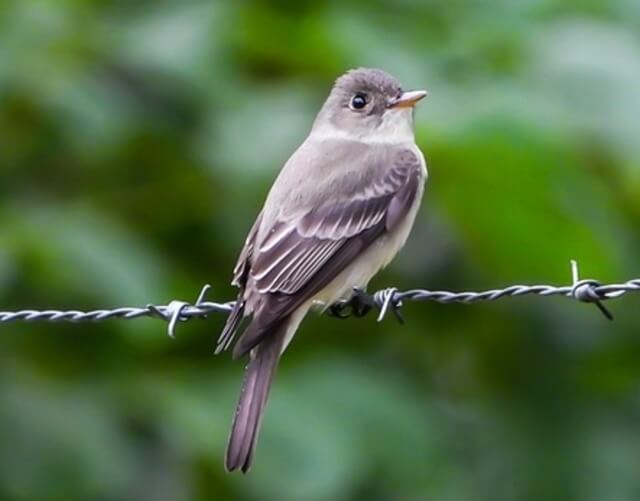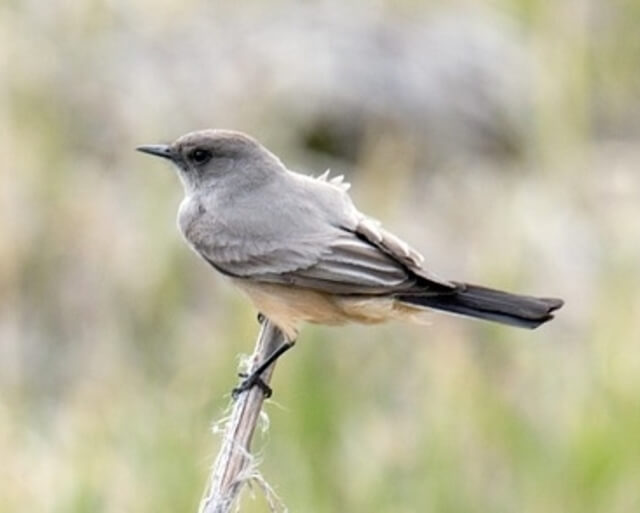Dragonflies are a common sight in any garden, or lake, but what you may not know is that some of these small flying creatures are actually eaten by birds! Here are 29 birds that eat dragonflies, along with photos, identification information and where to find them.
Table of Contents
- 1 Birds That Eat Dragonflies
- 1.1 Vermilion Flycatcher
- 1.2 Alder Flycatcher
- 1.3 Dusky Flycatcher
- 1.4 Gray Flycatcher
- 1.5 Great Crested Flycatcher
- 1.6 Scissor-tailed Flycatcher
- 1.7 Gray Kingbird
- 1.8 Eastern Kingbird
- 1.9 Western Kingbird
- 1.10 Willow Flycatcher
- 1.11 Barn Swallow
- 1.12 Cliff Swallow
- 1.13 Tree Swallow
- 1.14 Belted Kingfisher
- 1.15 Merlin Falcon
- 1.16 Peregrine Falcon
- 1.17 Red Kite
- 1.18 Black Kite
- 1.19 American Green Heron
- 1.20 Great Blue Heron
- 1.21 Little Blue Heron
- 1.22 Semipalmated Sandpiper
- 1.23 Solitary Sandpiper
- 1.24 Spotted Sandpiper
- 1.25 Upland Sandpiper
- 1.26 Eastern Wood-Pewee
- 1.27 Black Phoebe
- 1.28 Eastern Phoebe
- 1.29 Say’s Phoebe
- 2 Conclusion
- 3 Author
Birds That Eat Dragonflies
Vermilion Flycatcher
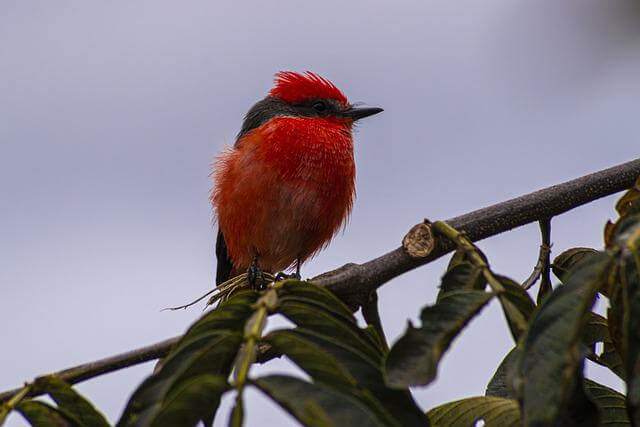
The Vermilion Flycatcher is a small, North American bird that ranges from southwestern Canada to northern Mexico. The flycatcher inhabits open woodlands and riparian corridors, where it feeds on a variety of insects, including dragonflies.
The bird nests in the upper branches of trees, typically making a cup-shaped nest out of mud, grasses, and other materials. The female Vermilion Flycatcher lays four or five eggs and incubates them for two weeks. The young birds fledge after about 14 days.
Alder Flycatcher
The Alder Flycatcher is a small songbird that ranges from Canada to Central America. They are usually found in wet, wooded areas near streams or rivers. Flycatchers are named for their hunting technique of flying out to catch insects in midair. Alder flycatchers eat a variety of insects, but they especially like dragonflies.
Dragonflies are fast and can be difficult to catch, but the alder flycatcher is up to the challenge. Flycatchers typically catch dragonflies by flying out and grabbing them in their talons. Once caught, the dragonfly is usually killed and eaten.
Dusky Flycatcher
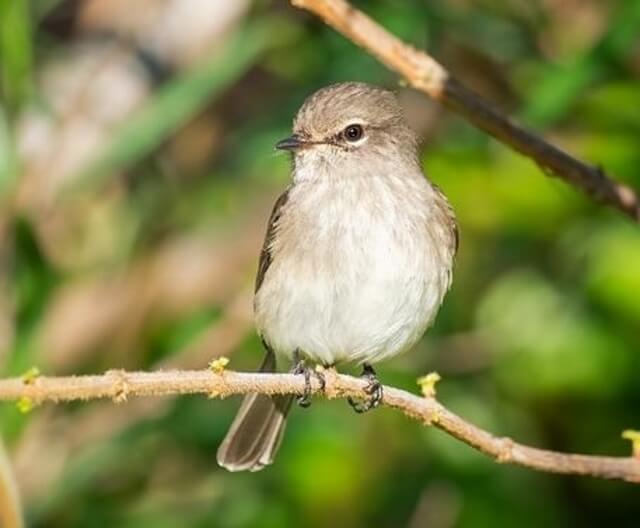
The Dusky Flycatcher is a small songbird that can be found in open woodlands and forests across North America. These birds prefer to live in areas near water, where they can easily catch insects. Dusky flycatchers are insectivores, meaning that they eat mostly insects. Dragonflies are one of their favorite prey items, but they will also eat other types of flying insects.
Dusky flycatchers build their nests in trees or shrubs, typically close to water. They typically have two broods each year, with the first brood hatching in late May or early June. The second brood typically hatches in late July or early August.
Gray Flycatcher
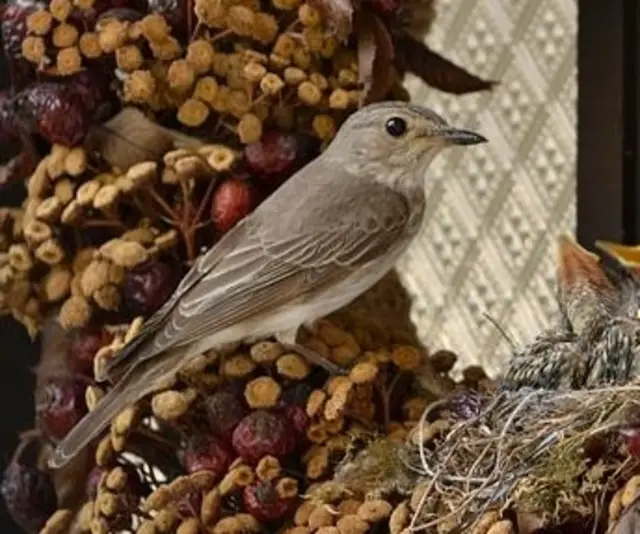
Gray Flycatchers are migratory songbirds that can be found in North America, Central America, and South America. They live in open woodlands, forests, and wetlands. These birds primarily eat insects, but they have been known to eat small lizards and other small prey. Gray Flycatchers hunt by fly catching; they perch on a high tree branch and watch for insects to fly by.
If an insect is spotted, the bird will dart out and catch it in its mouth. Gray Flycatchers are able to catch dragonflies in the air due to their quick reflexes and strong wings. They will also eat other flying insects such as mosquitoes and flies.
Great Crested Flycatcher
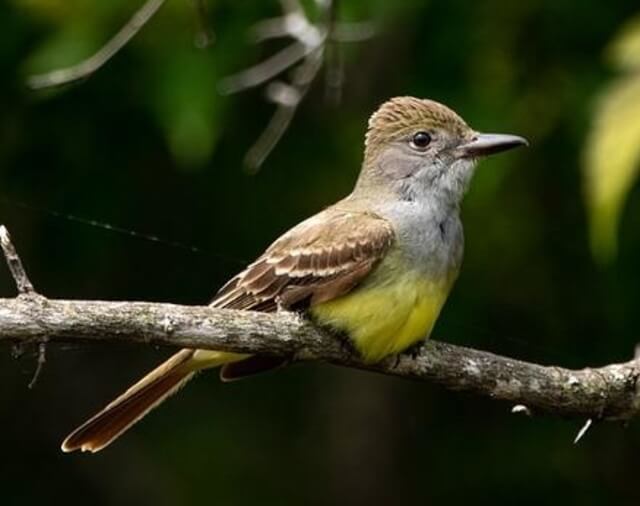
The Great Crested Flycatcher is a medium-sized songbird that can be found throughout North America. They live in a variety of habitats, including woodlands, forests, and even gardens. Great Crested Flycatchers are insectivores and feed primarily on bugs, such as dragonflies.
They are also known to eat other small animals, such as mice and snakes. Great Crested Flycatchers are very territorial and often defend their territory against other animals, including birds of prey.
Scissor-tailed Flycatcher
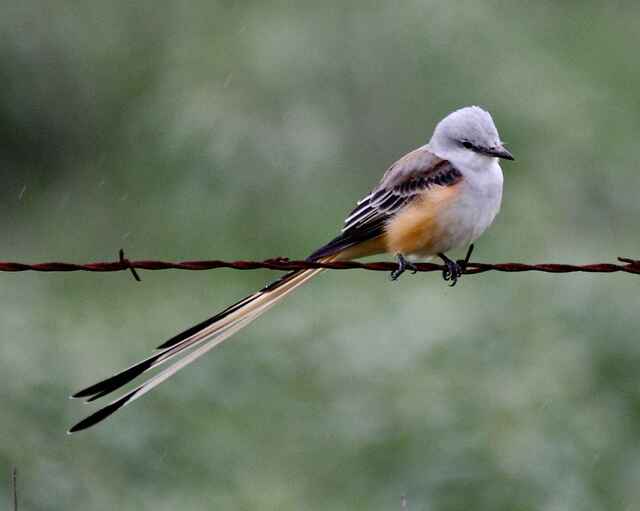
The Scissor-tailed Flycatcher is a passerine bird that inhabits the open woodlands of North America. They are usually seen perched on a tree or wire, where they flycatch their prey. The diet of the Scissor-tailed Flycatcher consists mostly of insects, such as dragonflies, grasshoppers and beetles. However, they will also consume small reptiles and amphibians.
They will often perch on a wire or fence and wait for a dragonfly to fly by. When they see one, they will quickly snatch it out of the air with their sharp beak. The breeding season for the Scissor-tailed Flycatcher begins in late April or early May and lasts until July.
Gray Kingbird
The Gray Kingbird is a migratory songbird that is found in open habitats across North America. They breed in open areas near water, such as fields, pastures, marshes, and prairies. During the winter, they can be found in a variety of habitats including deserts, mangroves, and agricultural areas.
Gray Kingbirds primarily eat insects, but they will also eat small fruits and berries. Their diet includes a wide variety of insects such as grasshoppers, crickets, beetles, caterpillars, and dragonflies. They often catch dragonflies out of the air by flying up to them and grabbing them with their talons.
Eastern Kingbird
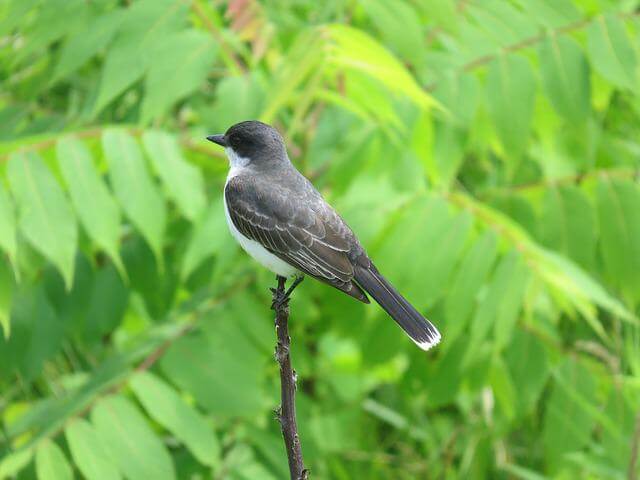
Eastern Kingbirds are widespread in North America, occurring from Southern Canada to Central America. They inhabit a variety of habitats, including open fields, forests, and wetlands. These birds feed on a variety of insects, including dragonflies.
Eastern Kingbirds are opportunistic predators that hunt by flying out from a perch to catch prey in the air. They are known to eat a wide variety of insects, including dragonflies. Dragonflies make up a significant part of their diet, particularly during the summer months.
Western Kingbird
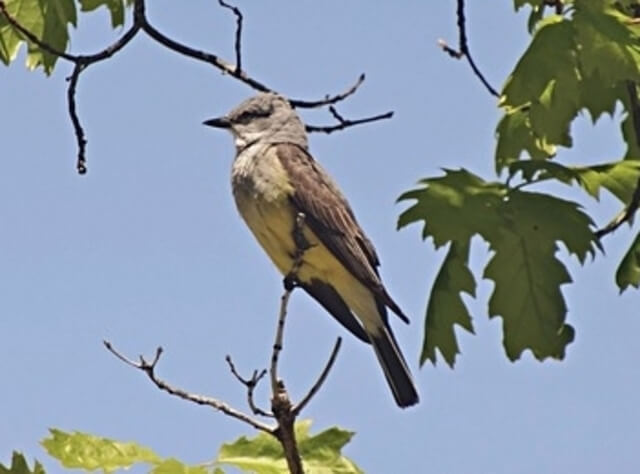
The Western Kingbird ranges across most of the North American continent, excluding only the far north and parts of California. They inhabit a variety of habitats, including open fields, prairies, pastures, marshes, and woodland edges. These birds forage for food in the air or on the ground.
Their diet consists mainly of insects, such as grasshoppers, crickets, beetles, caterpillars, and flies. They may also eat small reptiles and amphibians. Western Kingbirds occasionally catch dragonflies in flight; they are one of the few birds known to do so.
Willow Flycatcher
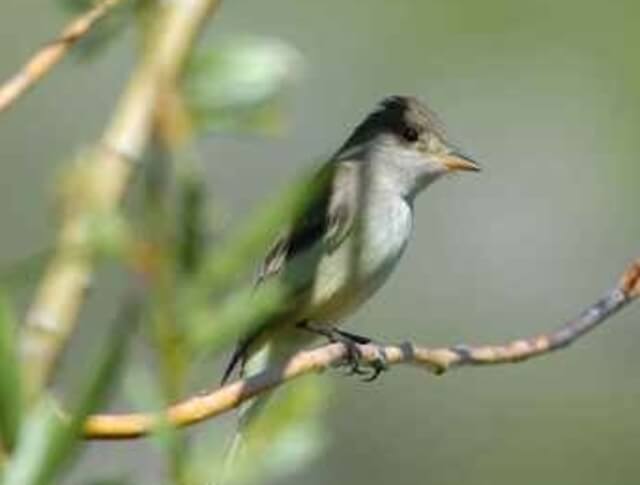
The Willow Flycatcher is a small songbird that can be found in North America. It ranges from Canada to Mexico and can also be found in parts of Central America. The Willow Flycatcher is a migratory bird and during the winter months, they can be found in the southern United States, Mexico, and Central America.
They prefer to live in open areas such as prairies, fields, and marshes. The Willow Flycatcher diet consists mostly of insects such as dragonflies, grasshoppers, beetles, and flies. They also eat spiders and small lizards.
Barn Swallow
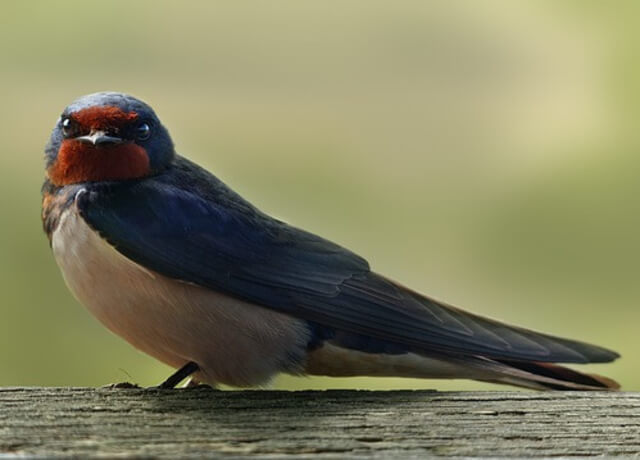
Barn swallows are a common sight across North America. They are usually found near open fields, meadows, and wetlands. These areas provide the birds with an ample food supply in the form of insects. Barn swallows consume a variety of insects, including dragonflies. Dragonflies are fast and agile predators that can be difficult for smaller birds to catch.
Barn swallows have adapted to this by developing a quick and accurate strike. They often snatch dragonflies out of the air while flying overhead. Dragonflies make up a significant portion of the barn swallow’s diet; up to 25% of their total intake may be composed of these aerial predators.
Cliff Swallow
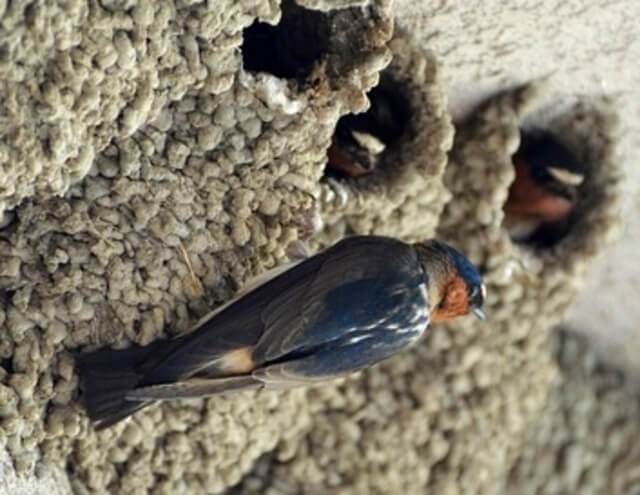
Cliff swallows are a common sight throughout most of North America. They live in open areas near water and can often be seen perched on telephone wires or building ledges. Cliff swallows feed mainly on insects, but they have also been known to eat berries and other small fruits. One of their favorite foods is the dragonfly.
Dragonflies are fast and agile, making them difficult for most birds to catch. However, cliff swallows have developed a unique hunting strategy that allows them to catch these insects. They fly low over the water’s surface and quickly snatch dragonflies out of the air.
Tree Swallow
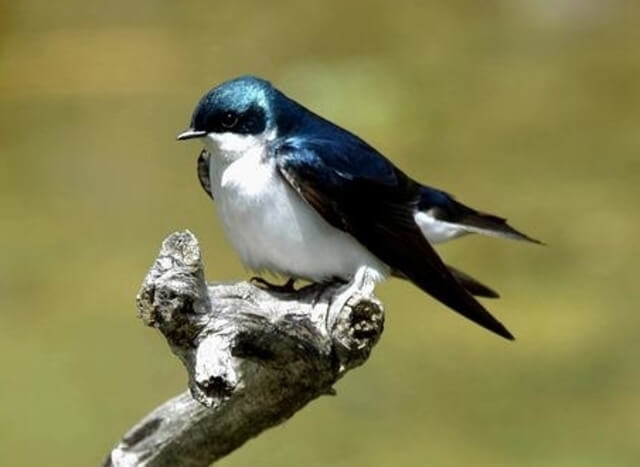
Tree Swallows are a common sight across North America, where they can be found in open areas near water. These birds primarily eat insects, and dragonflies make up a significant part of their diet. Dragonflies are swift and difficult to catch, but tree swallows have evolved several strategies for capturing them.
They often fly low to the ground to spot prey, and they can catch dragonflies in midair with quick reflexes. Once a swallow has caught a dragonfly, it will typically eat it on the spot or take it back to its nest to feed its young.
Belted Kingfisher
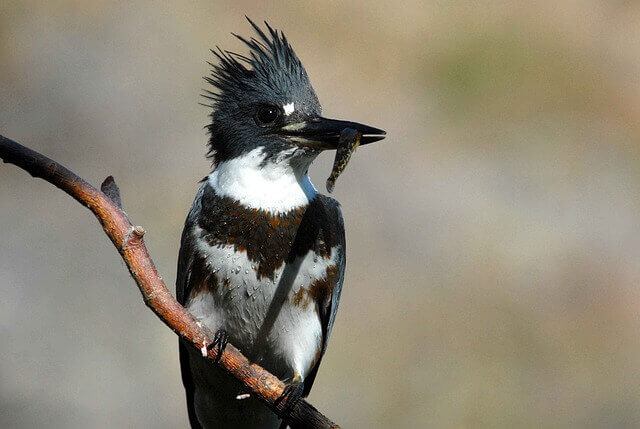
The Belted Kingfisher (Ceryle alcyon) is a medium-sized, stocky waterbird that ranges across most of North America, Europe and Asia. They typically live near ponds, lakes and rivers, but can also be found in estuaries and coastal areas.
These birds feed mainly on fish, but will also consume other aquatic creatures such as amphibians, crustaceans and insects. Dragonflies are one of the main items in the kingfisher’s diet; they snatch them out of the air or from the water’s surface.
Merlin Falcon
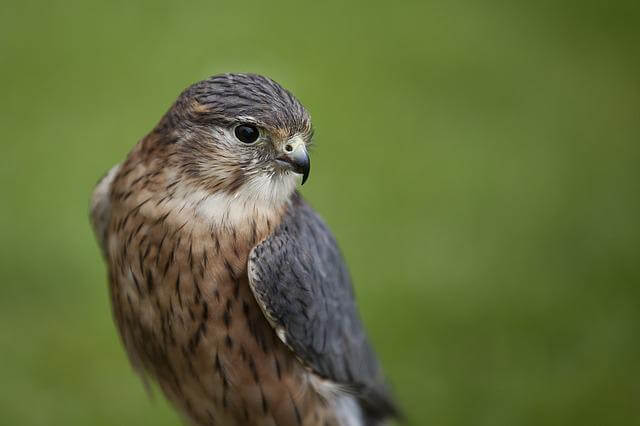
The Merlin falcon is a raptor that is found in North America and parts of Europe. The Merlin Falcon’s range extends from the tundra of the Arctic to the deserts of North Africa. They inhabit open country, such as fields, meadows, and prairies.
The Merlin Falcon feeds on a variety of prey items, including small mammals, birds, reptiles, and insects. Dragonflies are one of the Merlin Falcon’s favorite prey items. They usually catch them in flight, but they will also eat them on the ground.
Peregrine Falcon

The Peregrine Falcon is found in many parts of the world. They prefer mountainous areas and coastal cliffs, but can also be found in open country and even cities. The diet of the Peregrine Falcon consists mainly of small birds, but they have also been known to eat bats, lizards, and insects.
One insect that the Peregrine Falcon is known to eat is the dragonfly. Dragonflies are fast and agile fliers, and can be difficult for a bird of prey to catch. However, the Peregrine Falcon has been known to take down dragonflies in midair.
Red Kite
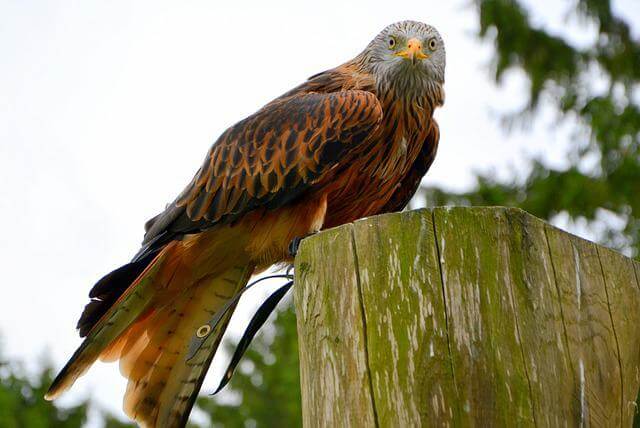
The Red Kite, Milvus milvus, is a medium-sized raptor found throughout Europe and parts of Asia. The species is migratory, wintering in Africa. Red kites inhabit a wide variety of habitats, from open fields and meadows to forests and wetlands. They prefer areas with plenty of trees for nesting and hunting, but can also be seen soaring over open countryside.
Kites feed mainly on small mammals such as rabbits, hares, and rodents, but they will also take birds, reptiles, amphibians, insects, and carrion. In North America they are occasionally seen feeding on dragonflies.
Black Kite
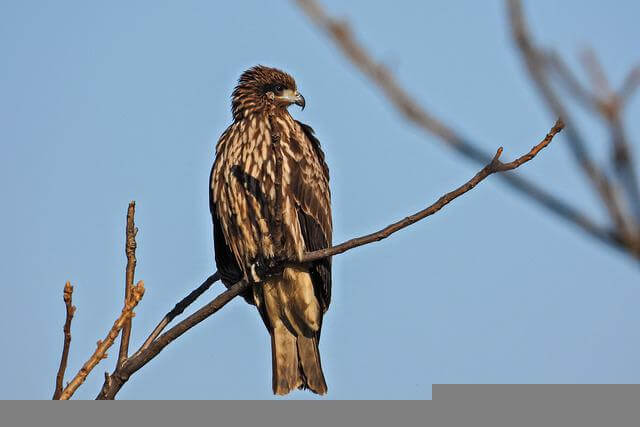
The Black Kite (Milvus migrans) is a medium-sized raptor that can be found in a variety of habitats around the world. They are common in open areas near water, like marshes and wetlands, but can also be found in forested areas and even cities. Black kites primarily eat small mammals, birds, and reptiles, but they have also been known to catch and feed on dragonflies.
Their diet changes seasonally depending on what prey is available. In the summer they eat mostly insects, including dragonflies, while in the winter they switch to mostly small mammals and birds. Black kites have a very wide range and are found in many different parts of the world. They are not considered endangered or threatened and their populations seem to be stable.
American Green Heron
The Green Heron is a small, stocky heron that ranges throughout much of North America. It inhabits a wide variety of habitats, from marshes and swamps to open woodlands and even neighborhoods near humans. Green herons feed on a variety of small prey, including fish, amphibians, reptiles, insects, and crustaceans.
They often stalk their prey by wading through shallow water or walking through the understory before striking with their sharp bill. While they will eat dragonflies on occasion, they are more likely to catch and feed on other aquatic insects such as mayflies or caddisflies.
Great Blue Heron
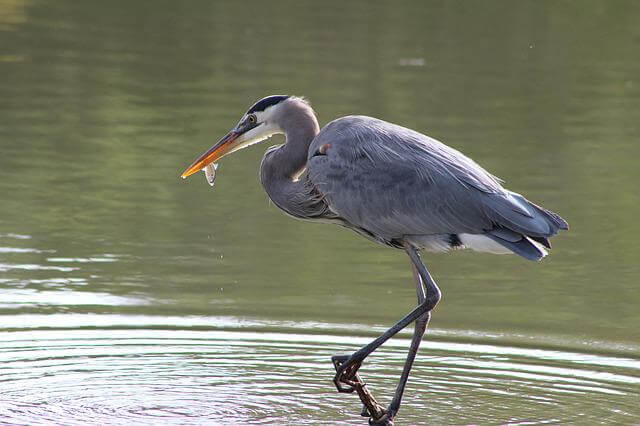
The Great Blue Heron is a large bird that can be found in many habitats, including marshes, swamps, lakes, and rivers. They are able to fly long distances and can be found in North America, South America, Europe, Asia, and Africa. These birds are carnivores and their diet consists of fish, amphibians, reptiles, small mammals, and insects. They have also been known to eat other birds. One of their favorite foods is the dragonfly.
Dragonflies are fast and agile insects that can be difficult for predators to catch. However the great blue heron has a few techniques that help it catch these prey items. One technique is to stand in shallow water with its neck stretched out so that its head is just above the surface of the water. This allows it to see any dragonflies that may be flying overhead.
Little Blue Heron
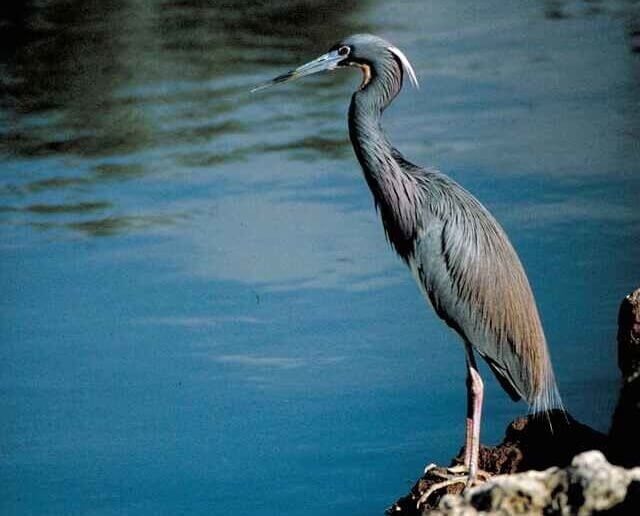
When you think of a heron, the large, stately Great Blue Heron often comes to mind. However, there is another heron that is much smaller, the Little Blue Heron. This heron can be found in many parts of North America, from the east coast to the west coast and north into Canada. The Little Blue Heron is a wetland bird and prefers habitats that have water nearby, such as marshes, swamps, ponds and lakes.
They are usually seen standing or wading in shallow water where they feed on insects, fish and other small animals. Do Little Blue Herons eat dragonflies? Yes, they do! Dragonflies make up a significant part of their diet. They often catch and eat dragonflies right out of the air.
Semipalmated Sandpiper
Semipalmated Sandpipers are a common sight on the East Coast of North America, where they can be found in a variety of habitats, from mudflats to salt marshes to beaches. These small shorebirds feed primarily on insects and other small invertebrates, including dragonflies.
Semipalmated Sandpipers typically forage by picking items off the ground or water’s surface, but they will also occasionally catch and eat flying insects. While dragonflies make up only a small percentage of their diet, they can be an important source of prey for these birds during the summer months.
Solitary Sandpiper
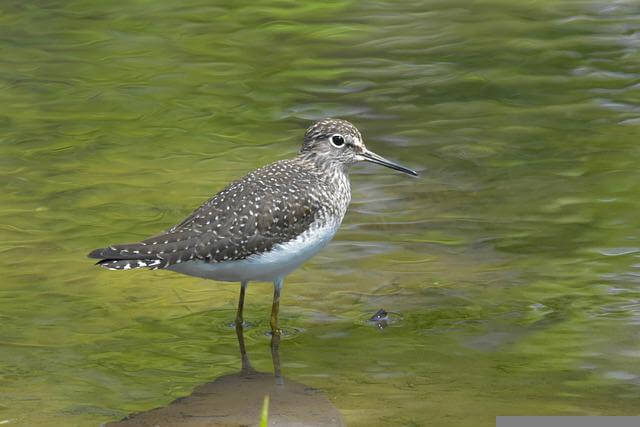
The Solitary Sandpiper (Tringa solitaria) is a small, stocky shorebird. It breeds in the northern parts of North America and Siberia, and winters in the southern parts of those continents and South America. This bird is unusual in that it is one of very few species that can be found in both fresh and salt water. The Solitary Sandpiper ranges from the Atlantic coast of North America to the Pacific coast, and from Alaska to Tierra del Fuego.
It prefers shallow, open water with a muddy or sandy bottom, but can also be found in brackish or salt water. The diet of the Solitary Sandpiper consists mainly of insects, such as dragonflies, mayflies and caddisflies although it will also eat snails, crustaceans, and some plant material. These birds are often seen hunting for food by hovering over the water’s surface.
Spotted Sandpiper
The Spotted Sandpiper is a small shorebird that ranges throughout North America, nesting in the northern parts of the continent and wintering in the southern U.S., Mexico, and Central America. This species prefers open habitats near water, such as marshes, wet meadows, prairies, and fields.
The diet of the Spotted Sandpiper consists mostly of insects, which they catch by probing the mud or sand near water’s edge. They have also been known to feed on dragonflies.
Upland Sandpiper
The Upland Sandpiper is a medium-sized bird that lives in open areas across North America. They breed in the northern part of the continent and migrate to the southern United States and Mexico for the winter. These birds like to live in grasslands, prairies, and other open habitats where they can easily see predators coming.
Upland Sandpipers eat mostly insects, but will also eat small rodents or reptiles if they can catch them. They often hunt by running along the ground after their prey, but they can also fly short distances to catch insects in the air. Dragonflies are one of the upland sandpiper’s favorite foods, and they often follow dragonfly swarms to catch them.
Eastern Wood-Pewee
Eastern Wood-Pewees are found in the eastern half of the United States and in southern Canada. Their range extends from Nova Scotia to Florida, and west to Texas and Oklahoma intoCentral America.They live in a variety of habitats, including woodlands, forests, swamps, and even parks and gardens.
These birds eat mostly insects, with dragonflies making up a significant part of their diet. They typically flycatch by hovering over open water or low vegetation and then swooping down to snatch an insect out of the air.
Black Phoebe
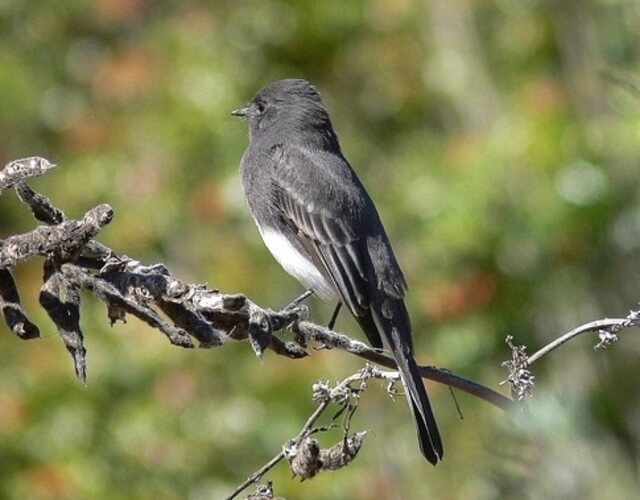
The Black Phoebe is a common bird in the western United States. It ranges from British Columbia and Alberta in Canada, south through California, Nevada, Utah, and New Mexico. Their preferred habitats include open country near water such as streams, rivers and ponds.
They eat a variety of insects but are especially fond of dragonflies. They will often perch on a low branch close to the water’s edge and wait for an unsuspecting dragonfly to fly by before catching it in their beak.
Eastern Phoebe
The Eastern Phoebe (Sayornis phoebe) is a species of flycatcher that is found in eastern North America. This passerine bird is usually seen near water, where it catches insects in flight. The Eastern Phoebe’s diet consists mainly of dragonflies, although it also eats other insects such as beetles and bees.
The Eastern Phoebe can be found in a variety of habitats, including forests, wetlands, and urban areas. This bird ranges from southern Canada to northern Mexico. It is most common in the eastern United States, where it is listed as a species of least concern by the IUCN.
Say’s Phoebe
Say’s Phoebe (Sayornis saya) is a small, dark colored flycatcher that ranges from British Columbia and Alberta in Canada, down the western United States to Baja California in Mexico. They inhabit open areas such as prairies, meadows, and farmlands.
Say’s Phoebes feed mainly on insects such as beetles, grasshoppers, and dragonflies. They often perch on top of objects such as fences or utility poles to watch for prey. Once they spot an insect they will fly out to catch it in mid-air.
Conclusion
In conclusion, the diverse world of avian predators that feed on dragonflies highlights the intricate balance of nature. From aerial hunters like swallows to stealthy night hunters like owls, each bird species has adapted its hunting strategies to catch these agile insects.
As dragonflies play a crucial role in ecosystems by controlling insect populations, their predation by birds is a natural part of the food chain.
Through these interactions, we gain a deeper appreciation for the interconnectedness of life in the wild, where every species, no matter how small or large, plays a vital role in maintaining the delicate harmony of the natural world.

